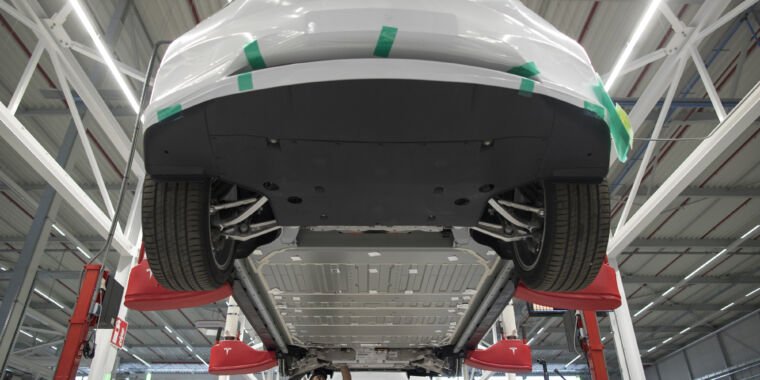Federal investigation of Tesla suspension failure ends with recommendation

Jasper Juinen/Bloomberg via Getty Images
The National Highway Traffic Safety Administration’s Office of Defects Investigation has closed a four-year probe into suspension failures affecting some Teslas. The problem is better known among the Tesla enthusiast community as the “whompy wheel” problem, and NHTSA’s ODI found hundreds of separate incidents of front suspension failures affecting both Model S sedans and Model X SUVs.
Although the automaker had previously issued a service bulletin to replace the faulty components on some cars, NHTSA says many more vehicles are fitted with the bad parts, and the bulletin should be expanded.
NHTSA began its preliminary evaluation in November 2020 following 43 reports of left or right front suspension fore link failures in model year 2015–2017 Model S and 2016–2017 Model X electric vehicles. Most of these happened at low speeds while parking, and only four occurred at highway speeds.
Tesla actually issued a service bulletin in 2017 to replace the front suspension fore links in some vehicles if either the left or right fore link was damaged or if the vehicle was due for an alignment. Although Tesla eventually issued a recall in China after pressure from the authorities, it told regulators in the US that the problem was due to “driver abuse,” according to Reuters.
But three years later, NHTSA noted that the problem of Teslas suffering suspension failures was becoming more common. In a December 2020 letter to the automaker, the agency pointed out that of a then-identified 53 cases, “Forty-one (41) of the incidents have occurred in the last 18 months, including nine (9) of the incidents that occurred while driving and all four (4) that occurred at highway speeds.”
10 times as many cases
During its investigation, NHTSA was able to identify 426 reports of either a Model S or Model X suffering suspension failure due to a faulty fore link. More specifically, it was able to narrow down the culprits to a pair of part numbers. Thankfully, only one suspension failure resulted in a crash (which was minor), and even in the eight failures that occurred above 40 mph (64 km/h), they did not result in the vehicles becoming uncontrollable.
Although Tesla issued a service bulletin in 2017, NHTSA said the subpopulation of vehicles affected by the bulletin, which were built between January and May 2016, only accounted for 25 percent of the failures identified by the probe.
Since the suspension failure does not lead to a loss of vehicle control, NHTSA has decided to close the evaluation with a recommendation to Tesla that it expand its service bulletin to cover any vehicle equipped with either of the two faulty fore link part numbers.
Source link




